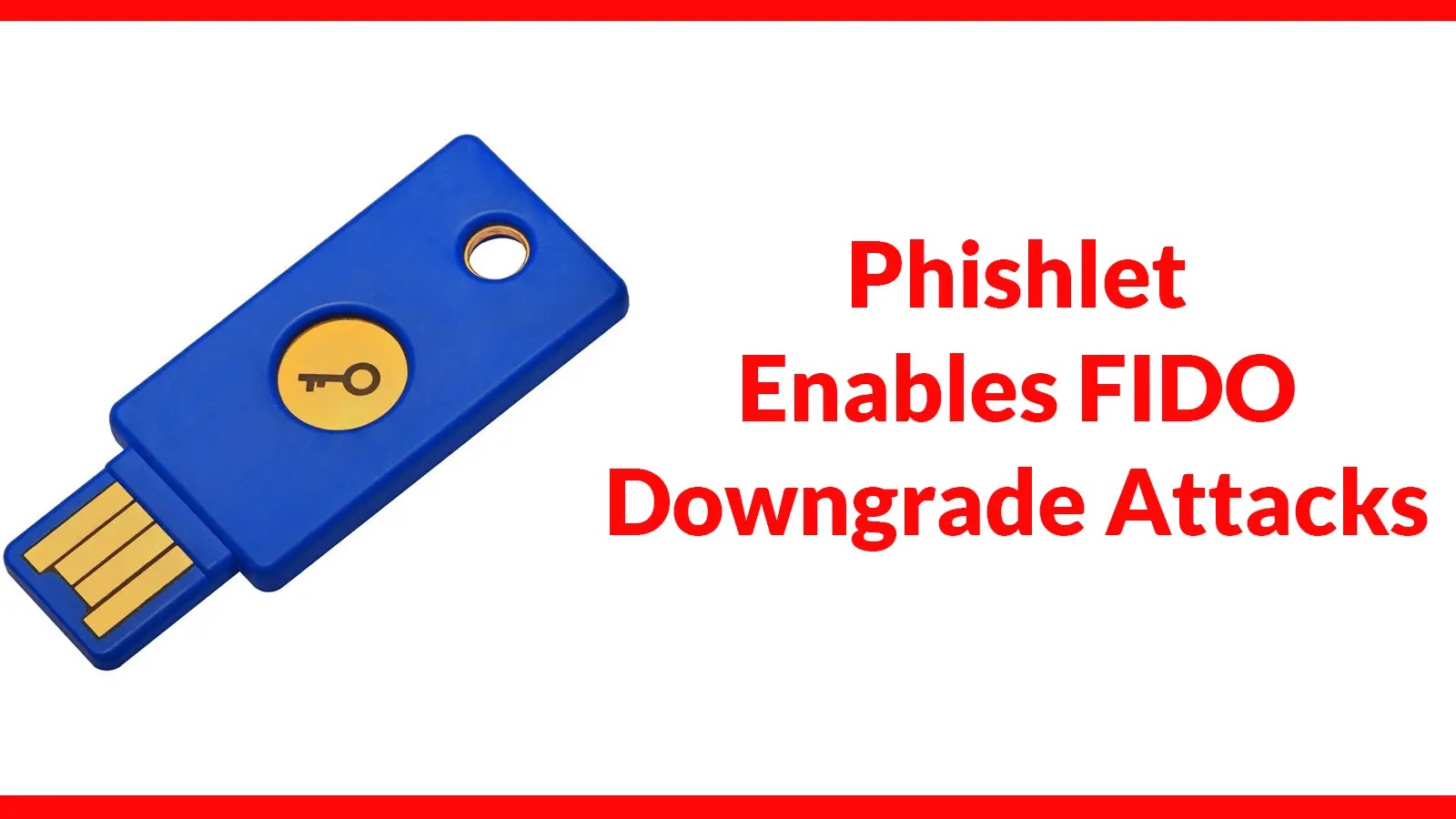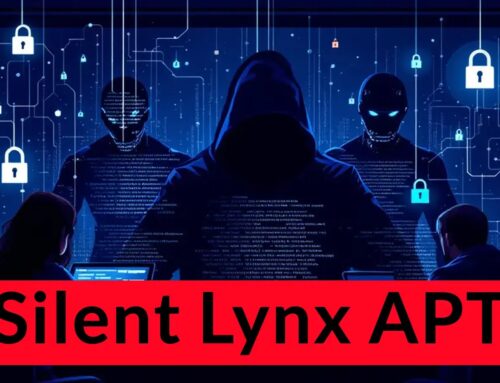
Hackers Using Dedicated Phishlet to Launch FIDO Authentication Downgrade Attacks
FIDO Authentication Under Siege: A Deep Dive into Phishlet Downgrade Attacks
For years, FIDO-based passkeys have been hailed as the vanguard of phishing-resistant authentication, offering a robust shield against common credential theft techniques. They represent a significant leap forward in securing digital identities. However, a disconcerting new intelligence has emerged from the cybersecurity landscape: hackers are deploying sophisticated “phishlets” to execute FIDO authentication downgrade attacks. This innovative threat vector bypasses the inherent strengths of FIDO, forcing users into less secure authentication schemes and significantly elevating their risk of compromise.
Understanding the FIDO Downgrade Mechanism
The core of this attack lies in a maliciously crafted phishlet – a component within a phishing kit designed to mimic legitimate login portals with extreme precision. While traditional phishing aims to simply capture credentials, this advanced phishlet intercepts FIDO authentication requests. Instead of directly stealing the FIDO credential (which is inherently resistant to such theft), it exploits a critical, unpatched vulnerability within the FIDO authentication flow. This vulnerability (though a specific CVE is not yet publicly disclosed in the provided source, it’s crucial to acknowledge its presence) allows the attacker to manipulate the authentication handshake. The phishlet effectively tricks the user’s browser or device into believing that FIDO authentication is unavailable or has failed, prompting a fallback to a less secure method, such as a traditional username and password, or a One-Time Password (OTP).
The deceptive nature of this attack is particularly insidious. Users, believing they are interacting with a legitimate service, are presented with a series of prompts that guide them through a “downgrade” process. This often involves plausible-sounding error messages or instructions to “re-authenticate” using an alternative method, leading them directly into the attacker’s trap.
The Anatomy of a Sophisticated Phishlet
Unlike simplistic phishing pages, these dedicated phishlets are highly sophisticated. They possess features typically found in advanced adversary-in-the-middle (AiTM) frameworks, but with a specific focus on FIDO abuse. Key characteristics include:
- Real-time Proxying: The phishlet acts as a reverse proxy, relaying communication between the victim and the legitimate service. This allows it to intercept and modify authentication requests on the fly.
- Dynamic Content Generation: Phishlets can dynamically generate login pages that adapt to various FIDO implementations and user agents, making them highly convincing.
- Error Message Obfuscation: The phishlet is programmed to display authentic-looking error messages that subtly mislead users into performing the downgrade.
- Session Hijacking Capability: Once the downgrade is successful and less secure credentials are obtained, the phishlet may also capture session cookies, enabling direct access to the victim’s account without further authentication.
Why FIDO Downgrade Attacks Are Particularly Dangerous
This attack vector presents a significant challenge for several reasons:
- Undermining Trust in FIDO: The primary appeal of FIDO is its phishing resistance. When users perceive that FIDO can be bypassed, it erodes confidence in a crucial security control.
- Exploiting Human Psychology: The attacks leverage social engineering and urgency, guiding users through a series of “troubleshooting” steps that lead to compromise.
- Difficulty in Detection: From a user’s perspective, the process might initially appear to be a legitimate technical glitch, making it hard to identify as an attack in progress.
- Broader Attack Surface: By forcing a downgrade, attackers expand their potential target pool to include any accounts that still support less secure authentication methods, even if FIDO is enabled.
Remediation Actions and Mitigations
While the specific vulnerability exploited by these phishlets needs to be addressed by FIDO implementers and vendors (pending CVE details), organizations and users can adopt several proactive measures to bolster their defenses against FIDO downgrade attacks:
- Educate Users on Suspicious Prompts: Train users to be highly skeptical of unexpected prompts to “re-authenticate” or “downgrade” their security settings, even if they appear on seemingly legitimate sites. Emphasize out-of-band verification.
- Implement Conditional Access Policies: Leverage Zero Trust principles. Configure Conditional Access policies to restrict access based on device health, location, and authentication strength. Forcing FIDO authentication as a primary method for sensitive resources can make downgrade attempts more difficult.
- Monitor Authentication Logs for Anomalies: Continuously monitor authentication logs for unusual login patterns, failed FIDO authentications followed by successful traditional logins from the same user, or logins from unexpected locations/IP addresses.
- Phishing Simulation and Training: Conduct regular phishing simulations that specifically mimic FIDO downgrade scenarios to reinforce user awareness and defensive behaviors. Test employees’ ability to identify these sophisticated attacks.
- Enforce FIDO-Only Policies Where Possible: For critical accounts, consider policies that strictly enforce FIDO authentication and disable all alternative, less secure authentication methods for those accounts. This eliminates the downgrade path.
- Implement Web Application Firewalls (WAFs): WAFs can help detect and block known malicious patterns associated with phishing kit infrastructure, although sophisticated phishlets may evade basic WAF rules.
- Stay Updated on FIDO Vulnerabilities: Organizations using FIDO authentication should subscribe to security advisories and promptly apply patches as they become available for relevant FIDO libraries, authenticators, and relying party services.
Tools for Enhanced Security Against Phishing and Downgrade Attacks
| Tool Name | Purpose | Link |
|---|---|---|
| Security Awareness Training Platforms (e.g., KnowBe4, PhishMe) | User education and phishing simulation to build resilience against social engineering. | https://www.knowbe4.com |
| MFA/FIDO Policy Management Solutions | Enforcing strong authentication policies and monitoring their application across the organization. | (Varies by vendor, e.g., Okta, Microsoft Entra ID) |
| Security Information and Event Management (SIEM) Systems | Aggregating and analyzing logs for anomalous authentication attempts and potential compromise. | (e.g., Splunk, Microsoft Sentinel) |
| Endpoint Detection and Response (EDR) Solutions | Detecting and responding to malicious activities on endpoints, including those initiated by phishing. | (e.g., CrowdStrike, SentinelOne) |
Conclusion
The emergence of dedicated phishlets targeting FIDO authentication downgrade is a stark reminder that even the most advanced security mechanisms are not impervious to resourceful attackers. This development necessitates a multi-layered defense strategy: continued vigilance in user education, robust technical controls, and proactive threat intelligence. As cybersecurity professionals, our role is not just to implement cutting-edge technologies but to understand and anticipate how adversaries will attempt to bypass them, thereby ensuring our defenses remain robust against evolving threats.





